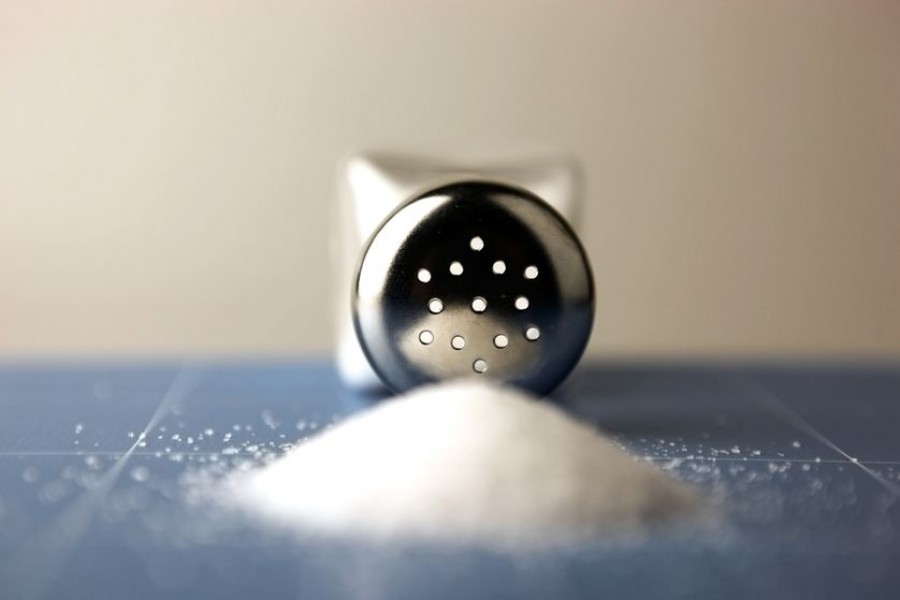
Published :
Updated :

The revelation made by a recent study that 60 million people, representing more than 38 per cent of the country's population, still do not get the recommended daily dose of iodine would surely prompt many to raise their eyebrows in disbelief. The percentage, undoubtedly, is too high given the widespread availability of iodised salt. The piece of information should also stir up enough of worries among the health sector policymakers because of the known adverse effect of iodine shortage in humans. The disclosure made at a seminar, held recently in Dhaka, makes it imperative for them to revisit the relevant policies and programmes that have been in place for a long time.
Humans do need to take a minute amount of iodine daily. But, consumption of this chemical element lesser in volume than the recommended daily dose does affect production of hormones by thyroid glands. These hormones are again necessary for normal development and function of the brain. Iodine does also play important role in the functioning of some other vital human organs. The common sign of iodine deficiency is goiter. People living in places distant from sea banks and hilly areas do often suffer from iodine deficiency.
Decades back, a large number of people living in Mymensing, Rangpur regions and hilly districts used to suffer from severe Iodine Deficiency Disorders (IDD) and many of them had goiter (swollen thyroid gland). The situation started changing from 1989 when the government formally accepted universal salt iodisation (USI) as a cost-effective and sustainable strategy to ensure adequate iodine nutrition for the population. In addition to a programme to create awareness among the population, the local salt producers got financial support under a number of donor-financed programmes, the largest being the GAIN-UNICEF partnership project, to market iodised salt.
The GAIN (global alliance for improved nutrition), a Geneva-based independent non-profit foundation, and the UNICEF jointly started the seven-year project in 2008 to remove iodine deficiency among at least 90 per cent population by 2015. One of the major objectives of the project was also to strengthen the monitoring and evaluation capability of the relevant government agencies in the matters of reducing IDD among the population. But the presence of iodine deficiency among a sizeable section of the population, as identified lately by the research study, does put the efficacy of both local and international initiatives to question.
The government's commitment towards lowering the incidence of IDD by making available the iodised salt at affordable price across the country has surely weakened in recent years. This is evident from the soaring prices of iodised salt. The retail price of this daily necessity has almost doubled over the last three to four years mainly because of the greed for earning unreasonable profit by all involved in its production and sales.
The gap between the wholesale and retail price of a kilogramme of packaged iodised salt is Tk. 10. The high price of iodised salt, thus, is forcing the poor and low income people to consume ordinary salt. There are also allegations of irregularities in salt import and in their pricing. The Ministry of Commerce and the Ministry of Health should make a joint effort to ensure production of enough iodised salt and sale of the item at an affordable price, particularly among the most vulnerable sections of the population.


 For all latest news, follow The Financial Express Google News channel.
For all latest news, follow The Financial Express Google News channel.